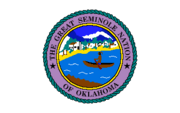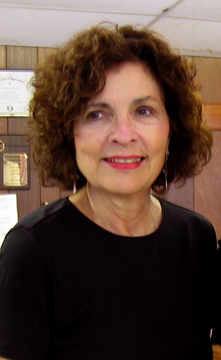Seminole Nation of Oklahoma facts for kids
Quick facts for kids
Seminole Nation of Oklahoma
|
||
|---|---|---|
|
||
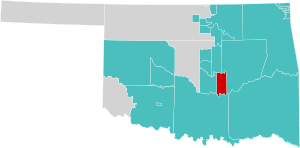
Location (red) in the U.S. state of Oklahoma
|
||
| Indian Removal | 1842 | |
| Reservation Reconstituted | July 9, 2020 | |
| Capital | Wewoka, Oklahoma | |
| Population | ||
| • Total | 18,800 | |
| Demonym(s) | Seminole | |
| Time zone | UTC−06:00 | |
| • Summer (DST) | UTC−05:00 (CDT) | |
The Seminole Nation of Oklahoma is a Native American tribe. It is officially recognized by the U.S. government. This tribe is based in the state of Oklahoma. It is the largest of the three Seminole tribes recognized by the U.S. government. The other two are in Florida.
The Seminole Nation members are descendants of about 3,000 Seminoles. They were forced to move from Florida to Indian Territory after the Second Seminole War. About 800 Black Seminoles also moved with them. The main office for the Seminole Nation of Oklahoma is in Wewoka. This town is located in Seminole County, Oklahoma.
Out of 18,800 tribal members, 13,533 live in Oklahoma. The tribe started to rebuild its government in 1936. This happened under the Indian Reorganization Act. The tribe's land used to be much larger. Today, their official area covers Seminole County. They own many properties within this county.
A few hundred Seminoles stayed in Florida. They fought against U.S. forces in the Third Seminole War. Peace was made without them being defeated. Today, their descendants have formed two recognized Seminole tribes. These three tribes, along with other traditional Seminoles in Florida, received money in 1976. They were paid $16 million for nearly 24 million acres of land. The U.S. government took this land in Florida in 1823.
Contents
Seminole History
Early History in Florida
The Seminole Nation of Oklahoma has a history that began in Florida. The Seminole people were made up of different Indigenous American groups. These groups moved into Florida after most of the first tribes there had left or become smaller.
A Spanish explorer named Pedro Menéndez de Avilés founded St. Augustine in 1565. This was the first lasting settlement in Florida. He found complex Indigenous cultures living there. These people hunted, fished, farmed, and raised animals. Tribes from three language groups lived in Florida. They were the Timuquan, Calusan, and Muskhogean. They lived in small, well-organized villages.
The name "Seminole" came from a European misunderstanding. It was used to group many different tribes together. The Spanish first called the Mvskoke speakers cimarrones. This meant "free people." This term eventually applied to all people living in Florida in the 1700s. It also included neighbors who joined them to escape European settlers. The Seminole people welcomed parts of other Florida tribes into their own. The Oconee were the first "Seminole." Later, groups like the Eufaula, Mikasuki, and Tallahassee joined them.
The Muscogee Creek Confederacy had a strong presence in the Southeast. Enslaved people who escaped or were freed by the Spanish formed their own communities. These "maroon" communities were close allies of the Seminole. They sometimes married each other. But studies show they mostly kept their own cultures. These African Americans became known as Black Seminoles. The Spanish word cimarrones became semvlonē in Creek. This word later changed to Semvnole.
Wars and Relocation
The United States started the First Seminole War in 1818. They wanted to stop Seminole raids on Georgia. They also wanted to break up armed Black communities. In 1821, the U.S. bought Florida from Spain. White settlers wanted more fertile land. They pressured the government to move the Seminole. In 1823, the U.S. forced most Seminoles from northern Florida. They moved them to a reservation in central Florida. This was part of the Treaty of Moultrie Creek.
Seminoles continued to leave the reservation. This led to a second war. It was the most expensive war for the U.S. at that time. Many troops were involved. After the Second Seminole War in the 1830s, about 3,000 Seminole and 800 Black Seminoles were forced to move. This was called Indian removal. Many traveled by ship across the Gulf of Mexico. They went up the Mississippi River for part of the journey. They were first placed with the Creek people on their reservation. The 1830s was when other "Five Civilized Tribes" were also moved from the Southeast.
A few hundred Seminole stayed in the Florida Everglades. They used guerilla warfare to fight U.S. forces. This was during the Third and last Seminole War. The U.S. eventually pulled out. Today, their descendants have formed the recognized Seminole Tribe of Florida and Miccosukee Tribe of Indians of Florida.
Life in Indian Territory
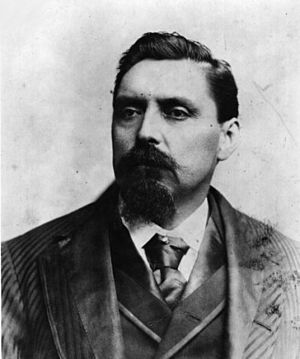
After being moved, the Oklahoma and Florida Seminole groups grew separately. They had little contact for almost 100 years.
Micanopy was the principal chief since 1825. He led the Seminole fight for their own reservation. They were first placed under the Creek in Indian Territory. Micanopy died in 1849. The U.S. had promised separate lands for them by 1855. His sister's sons, John Jumper (1849–1853) and Jim Jumper (1853–1866), became chiefs after him. Then the U.S. started to get involved in the tribal government.
The Seminole kept their political independence from the Creek. But the two groups became closer over time. They shared strong cultural traditions and began to marry each other. The Seminole reservation was originally about 360,000 acres. It covered what is now Seminole County. This was a strip of land between the Canadian River and North Canadian River. The U.S. wanted the Native Americans to farm. But less than half the land was good for farming.
The Black Seminoles also built towns near the Seminole. They had done this in Florida. They had good relations with the Seminole. They only struggled to protect their people from slave raiders.
After the American Civil War, many Seminole sided with the Confederacy. This included John Frippo Brown. He was the last Principal Chief of the Seminole Nation. Because of this, they had to give up some land. This was part of a new treaty with the U.S. government. They had to set aside land for the Seminole Freedmen. This happened after slavery was ended in Indian Territory in 1866. The treaty gave the Black Seminoles who stayed full citizenship in the tribe.
The Seminole did not like intermarriage with white people. They also did not like adopting European-American ways. In 1900, most were still full-blood Seminoles. They generally did not marry much with the Seminole maroons. The maroons were seen as having their own culture. The Seminole had a matrilineal system. This meant children belonged to their mother's family. Mixed-race children belonged to their mother's people, no matter their race.
In 1909, the Seminole lands were divided among individual families. This was part of a federal plan. It was meant to encourage farming and assimilation. Many people wanted to end tribal lands. They wanted Oklahoma (including Indian Territory) to become a state. In 1900, there were about 1,000 Seminole Freedmen. This was nearly one-third of the total Seminole tribe in Oklahoma. The Dawes Commission made two separate lists. One was for Seminole Indians and one for Freedmen. They became U.S. citizens in a state that had racial segregation.
The Seminole Freedmen faced extra discrimination. Some left for Canada or other states. Segregation created problems between the communities. The Freedmen quickly lost land to dishonest people. Their land sales were not watched over by the Indian Bureau. The Seminole also lost land. This sometimes happened because of people who were supposed to help them.
The Seminole Nation Today
The Seminole Nation of Oklahoma is located in Seminole County, Oklahoma. The entire county is part of the original Seminole Nation area. It covers about 633 square miles. The county has a mix of tribal trust land, Indian allotments, and other Indian lands. Native Americans make up 22% of the population in Seminole County.
The Seminole Nation Tribal Enrollment Office says there are 5,315 tribal citizens in the county. The total number of enrolled members is about 17,000.
Government and Leadership
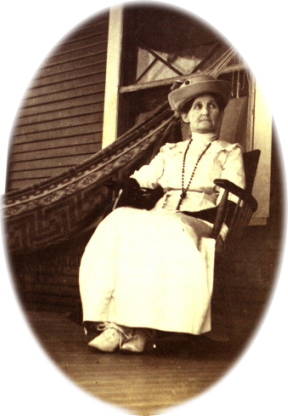
The Curtis Act of 1898 stopped the U.S. government from recognizing the tribe's government. This was during the time when lands were being divided. With the Indian Citizenship Act of 1924, the Seminole became U.S. citizens. They also received some services from the Bureau of Indian Affairs. The Seminoles (mostly full-blood) and the Seminole Freedmen became part of the segregated state of Oklahoma. This negatively affected their relationships.
Under the Indian Reorganization Act of 1934, the Seminoles reorganized their government. Some members did not want Freedmen to be part of the government. But the Constitution of the 1950s recognized Freedmen as citizens.
The Seminole Nation approved a new constitution on March 8, 1969. This changed their government to be more like their old traditions. Since the 1800s, the Nation has been made of 14 itálwa. These are matrilineal town bands. Two of these are Freedmen bands. Each band represents several towns. This social structure is also key to Seminole political and religious life. Each band has an elected chief and assistant chief. They meet every month.
Each band chooses two representatives for the General Council. Each band has its own rules. This structure was approved by the Commission of Indian Affairs in 1969.
The Seminole General Council is led by the Principal Chief and Assistant Chief. They are elected every four years. Tribal headquarters are in Wewoka, Oklahoma. The general council meets at the council house. This is on the Mekusukey Mission Tribal Grounds south of Seminole. The Nation is creating a new tribal constitution. This will remove the Bureau of Indian Affairs (BIA) from tribal government operations.
The tribal government has many departments. These include administration, money matters, family services, housing, and education. They also have language, elder services, and law enforcement. These departments get money from the tribe or from federal and state funds.
Language of the Seminole
Historically, the Seminole spoke two different Muskogean languages. These were Mikasuki and Creek. Creek was the main language in politics and society. So, Mikasuki speakers also learned Creek. As of 2002, about one-quarter of the tribe still spoke Creek. Most of these also spoke English. The rest spoke only English. Mikasuki is no longer spoken in Oklahoma.
English is the main language for most of the Seminole Nation of Oklahoma. The tribe is starting a language program. This program aims to bring back their traditional Creek language.
Location and Land
Today, the tribe manages about 372 acres of land. This land is held in trust by the federal government as their reservation. They also own about 53 acres of land directly. An additional 35,443 acres are set aside to add to the tribal land. The Seminole Tribal Jurisdiction Area is where they provide services to members. It includes most of Seminole County in south-central Oklahoma. This is about 45 miles east of Oklahoma City.
The Seminole Nation Tribal Complex is in the town of Wewoka. Wewoka is the site of many Seminole Nation programs and services. The Mekusukey Mission is located south and west of the city of Seminole. It includes tribal offices, recreation areas, and a cultural area.
Economic Development and Programs
The Seminole Nation of Oklahoma runs three casinos. They also have three tribal smoke shops, three gas stations, and a truck stop. These businesses bring in money for welfare, education, housing, and economic growth. They manage their own housing programs. They also have a business commission, family services, and a food program. They run environmental protection and social service programs. They even issue their own tribal vehicle tags.
The tribe also manages its share of money from a land claim settlement in 1990. Members can use this money for education and other benefits. In 2010, their total economic impact was $81 million.
Tourism and Recreation
The Nation holds its annual celebration, Seminole Nation Days. This happens on the third weekend in September. It takes place at the Mekusukey Mission Grounds. It celebrates tribal heritage and culture. The event is free and open to everyone. The Nation offers free concerts, carnivals, and cultural events. There is a main performer on Saturday evening. Other events include an art contest, a banquet, and a princess pageant. There are also cultural events, a parade, and sports. Food, art, and craft vendors are also there. A free traditional dinner is provided. About 10,000 people attend.
The Mekusukey Mission has RV campsites available all year. There are also softball fields and a gym at the Mission. Tribal members hold athletic and cultural events there all year.
Traditional dances are held during spring and summer. These happen at ceremonial grounds. Visitors should treat cultural ceremonies and grounds with great respect. If you are invited, you must follow strict cultural rules. Do not take any photos, videos, or sound recordings.
The Seminole Nation Museum is in Wewoka. It has exhibits on Seminole culture and history. An attached gallery and craft shop sells modern and traditional Seminole crafts. This includes the women's bright patchwork textiles.
Cultural Ceremonies
For Seminole people who follow traditional cultural practices, life centers around rituals. These happen at the "ceremonial or stomp grounds." Today, these places are where ceremonial dances, dinners, and ball games happen. This is mainly on weekends during spring, summer, and early fall.
Originally, the individual town bands or atilwa (etvlwv in Creek) would gather around the ceremonial ring. Seminole ceremonies are based in Creek culture. They guided every part of tribal life. These teachings still guide those who take part in these traditions today. The rituals were linked to the seasons. They were especially related to planting, harvest, and renewal.
Today, the "ceremonial cycle" has four or five dances. These happen during the "dance season." The Green Corn or Posketv-rakko (Big fast) is the most important. Green Corn can last from four to seven days. Friday is known as Hoktak-'pvnkv Nettv (Women's Dance Day). The Ribbon Dance happens then. Friday is also the day for the Yvnvsv 'Pvnkv (Buffalo Dance) at some grounds. The main dance on Saturday is the Cetvhayv 'Pvnkv, or Feather Dance.
During Green Corn and other ceremonies, participants dance, fast, take medicine, and work. A purifying herbal medicine is used. It is often put on the arms and legs. This "scratching" helps with spiritual and medical problems. It is believed to make the person stronger. Green Corn is like a combination of Thanksgiving, New Year's, and Easter.
During Green Corn, strained relationships among the tribe are to be fixed. Members are expected to forgive wrongs from the past year. The nighttime songs honor tribal ancestors and spirits. They also give thanks and offer prayers for the coming year. Sunday morning marks the end of the Green Corn ceremony. It is the start of a new year for the ground members.
After being moved, the Seminole set up eight ceremonial grounds in Indian Territory. Today, one, Ceyahv (Gar Creek), still has a full cycle of ceremonies.
Clan Law and Family
Clans are a very important part of Seminole society. They are based on family connections. Historically, clans were linked to certain animals and spirits. People promised to keep commitments related to their spirit.
Over time, groups of people connected by family became linked to specific animal spirits. They had duties as a clan. These duties were related to the spirit's place in their tribal religion. Creation stories explain the importance of the different clans. Each clan has special qualities and duties. These relate to specific jobs in the ceremonial ground, towns, and homes. Each clan had a special talent. They also had weaknesses for different parts of the spiritual world. Most Seminole people today still identify with their clans.
Clan law and family ties are highly respected by the Seminole people. They are key to their spiritual and ceremonial world. Clan law traditionally guides every part of tribal life. This includes spiritual life, government, social rules, and marriage.
The family system is matrilineal. This means descent and inheritance pass through the mother's family line. Children are born into their mother's clan. They get their social status from that group. For example, if a mother is from the Raccoon Clan and the father is from the Alligator Clan, the child belongs to the Raccoon Clan. However, this person is also related to the Alligator Clan, as a son or daughter. All other Raccoon Clan people and Alligator Clan people are considered the child's relatives.
In this system, Seminole adults must marry someone outside of their parents' clans. This rule stopped close relatives from marrying. For example, if a Raccoon Clan woman married a man from the Raccoon or Alligator clans, it would be like marrying a brother or father in European-American customs.
Historically, many marriages were arranged. This was based on clan strength or the need to help a declining clan. For example, if the Bear Clan was supposed to provide chiefs for a town, and there were few Bear Clan people, men would be encouraged to marry a Bear Clan woman from another town. Her children would belong to the Bear Clan in her new town. The males would then be in line to become chiefs.
Burial and Mourning Practices
Seminole people respect times of loss. When a loved one passes away, there are official mourning practices for four days. During this time, the family carries out the funeral steps. Modern Seminole people make sure a loved one is buried within four days after death. The mourning period includes customs and family traditions. Family and close friends help support the mourners. This includes fasting, overnight vigils, cooking, and cleaning.
The body of the deceased is usually buried with their feet facing East. Before the Removal, in Florida, the Seminole buried their dead under the floor of their home. Today in Oklahoma, people are often buried in family cemeteries. A small house is sometimes built over the grave. This house is called a poyvfekcv-cuko (spirit house). In this house, the family places objects important to the deceased. They also leave food from the traditional meal prepared after the funeral.
Notable Oklahoma Seminoles
- Fred Beaver (1911-1980), a painter and muralist
- Thomas Coker, a long-serving member of the Seminole General Council
- John Chupco (d. 1881), a chief during the Trail of Tears
- John Frippo Brown, the last elected Principal Chief before land division and statehood
- Alice Brown Davis (1852–1935), appointed Principal Chief in 1922 by President Warren G. Harding, the first woman in that role
- Enoch Kelly Haney, a politician and artist
- Benjamin Harjo, Jr., a painter, printmaker, and youth advocate
- Edmond Harjo, the last surviving Seminole Code Talker of World War II. He received the Congressional Gold Medal in 2013.
- Sterlin Harjo, a filmmaker
- Micanopy, principal chief through the Removal until his death in 1849
- Johnny Tiger Jr., an artist
- Mary Jo Watson, an art historian, curator, and educator


